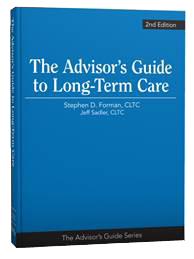Setting the Record Straight on Rate Increases
If you've picked up a paper recently, chances are you've read about rate increases. While much of this press actually concerns policy forms sold many years ago, the good news for today's applicants is how we benefit from the data gathered on all this experience.
Lapse Rates & Interest Rates
It is natural to assume that insurance companies have sought to raise rates as a result of poor claims experience, but that's rarely a significant factor. Instead, the two dominant drivers of rate instability have been Lapse Rates and Interest Rates. The first concerns how many policyholders renew each year, while the second relates to the interest earned on premiums and reserves.
- Early assumptions modeled LTC insurance on its close cousin, Disability Insurance (or "DI"), and figured in a 5% ultimate lapse rate. Instead, it turns out people renew their LTC coverage at an extremely high rate, which has led insurers to incorporate a much safer lapse rate (< 1%) in today's policies.
- Insurers must plan responsibly to make sure they have funds available decades in the future when the time comes to pay your claim. Their only sources of income are premiums and interest. Since 2003 the United States has seen an extended and unprecedented period of ultra-low interest rates.
Since today's plans benefit from not only more-conservative assumptions regarding lapses and interest rates, but also morbidity (how healthy you are) and mortality (how long you'll live), it's safe to say rates have never been more stable than on policies issued today.
In fact, the Society of Actuaries recently completed major research on this topic, which LTCA's vice president peer reviewed, and summarized here.
Guaranteed Rate Stability
Although rates on traditional long term care insurance are considered more stable than ever before, they are not guaranteed. If this is a feature that appeals to you, then you'll want to consider linked-benefit plans. Since they are built on a life insurance chassis, their premiums are guaranteed never to change. They also include return-of-premium provisions should you change your mind and elect to drop your plan, as well as a death benefit (whether you ever make a long term care claim or not).
Claim, quit or die, your investment is protected.






